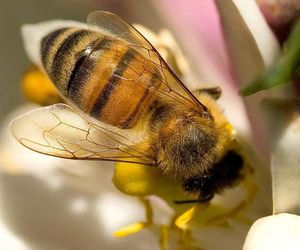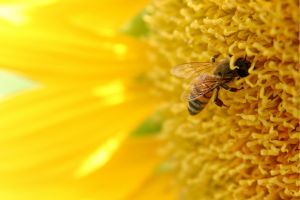Most plants bloom during the day when the sun shines, but there are some plants that are too shy to bloom during the day. They save all their beauty and release their fragrance to grace the nighttime hours. It’s always nice to open the windows and allow the breeze to carry the scent into the house. Or if you like to sit outside during the summer, breathing in the wonderful scents provide a restful place of refuge. Unlike the day blooming plants that have bees and other insects on them, the night-time blooming flowers are pollinated by nectar feeding moths and bats.
Moon Flowers
My mom planted moon flowers to grow outside the kitchen window. Moon flowers come in two colors, white and pink and they bloom by the light of the moon. Once the flowers open at night, they remain open until the sun light touches their petals. Moon flowers are easily propagated by seed and if you go by the moon signs, plant the moon flower when the moon is new or increasing for better flowers and plants. The moon flower plant can grow at least 15 feet in length.
Evening Primrose
The evening primrose plant (Oenothera) is from the Onagraceae family. This yellow blooming beauty is a native wildflower of North America. It blooms during the night-time hours from May until July. All parts of this plant are edible. The leaves are eaten like salad greens and the roots are like a potato. In some areas this plant is considered to be a weedy or invasive plant. The evening primrose is a biannual that grows between 3 and 5 feet tall. The flowers are between 0.78 to 2 inches across. This plant is hardy in zones 5 through 10.
Night Gladiolus
Night gladiolus (Gladiolus tristis) is another night-blooming flower that is often found growing in dense areas that receives a heavy rainfall. Plant the night gladiolus in well-drained soil. The flowers are a creamy yellow and the plant grows to 36 to 48 inches in length so provide a trellis or fence for them to grow against. Night gladiolus fills the nighttime are with an intense spicy scent. This plant is a native plant of South Africa. It is hardy in USDA zones 7 though 11. Gladiolus is a Latin word that means sword. If you plant night gladiolus in your yard, use caution, because all parts of this plant are poisonous if ingested. Wear gloves when handling the plant because it can cause skin irritations or an allergic reaction. As this plant grows the stems appear as though they have a twisted appearance.
Fairy Lilies
Fairy lilies (Chiladanthus fragrans) are hardy in USDA zones 7 through 10. You can plant this flower in full sun to part shade. The pale yellow flowers on the fairy lilies appear from each stalk in mid-summer, when the sun sets and darkness falls. This flower is another one that fills the nighttime air with a delightful fragrance. If they are grown in the cooler northern zones, the bulbs have to be dug each fall and stored through the winter in order to survive.
Triple Yellow Devil’s Trumpet
I like the flowers of the devil’s trumpet and the triple yellow devil’s trumpet (Datura) is one that not only blooms at night, is it also very fragrant. This plant is a fast growing bush-like tree that grows 4 to 6 feet tall. The creamy-yellow flowers are big. The trumpet-like flowers reach a length of about 8 inches. Instead of the flowers hanging down, they face upwards, attracting hummingbirds, sphinx moths and butterflies to suck their nectar. The Triple yellow devils trumpet has a long blooming time from late spring until fall. You can plant this Datura in sun to part shady locations. The triple yellow devil’s trumpet is hardy in USDA zones 9 and higher with a life expectancy of four to five years. You can also grow the devil’s trumpet in zones lower than 9, but you will either have to treat it as an annual or take it indoors when the weather turns cold. All parts of this plant are poisonous.
Resources:
Colorado State University: The Night Shift
Gardening Know How: Yellow Evening Primrose Plant Wildflower in the Garden
USDA: Plant Profile Evening Primrose




